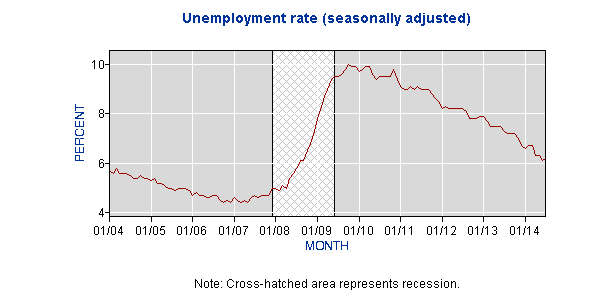March or June?
The big question for financial markets is whether the Fed will raise rates in March or June, it used to be Whether it would be June or September of 2015, and I think as the data gets better in the second half of the year, and QE ends in October, the timeline could be moved up even further, say January of 2015 for the first rate hike.
Data Dependent creates box for the Fed
For example, what happens to expectations if besides the consistent 200k plus employment reports each month we get a 350k number? What kind of pressure will this put on the Fed to move on rates, especially sense QE has ended in October? I think there is a distinct possibility over the next five months that we have a 350k plus employment report, and the Fed line about changing data and data dependent comes into play. In this case they set the bar for moving sooner or later, and the bar would be surpassed with a 350k employment report.Â
5.9% or 350k – which comes first?
Also what happens if the unemployment rate drops to 5.9% over the next 4 months, this key psychological rate number being below 6% is real close to approximating full employment by historical standards, and they are still sitting at zero percent in the fed funds rate? The questions and pressure just from their academic peers in the economics community for not addressing this change in data would be immense to say the least from a credibility standpoint.

Â
I would estimate that there is a 40% chance that one of these two data measures in an outsized employment number of 350k plus, and/or a 5.9% reading on the headline unemployment rate comes to fruition that puts considerable pressure of the Fed to move up the first rate hike, or they have some serious explaining to do.
QE Ends in October
Things are going to be completely different when QE ends in October, they can no longer pacify markets with this kind of ‘tightening’ and financial markets are going to start re-pricing all on their own, in a sense telling the Fed where they will be going. This is what markets do, as investors try to front run Central Bank actions. And given how many participants have to switch directions, rates are going to start moving up in the second half of the year on any good economic data in the form of robust GDP reports, 250k plus employmentreports, and a drop in the headline unemployment rate.

